Related Research Articles

Goldwyn Pictures Corporation was an American motion picture production company that operated from 1916 to 1924 when it was merged with two other production companies to form the major studio, Metro-Goldwyn-Mayer. It was founded on November 19, 1916, by Samuel Goldwyn, an executive at Lasky's Feature Play Company, and Broadway producer brothers Edgar and Archibald Selwyn, using an amalgamation of both last names to name the company.

William Wadsworth Hodkinson, known more commonly as W. W. Hodkinson, was born in Independence, Kansas. Known as The Man Who Invented Hollywood, he opened one of the first movie theaters in Ogden, Utah in 1907 and within just a few years changed the way movies were produced, distributed, and exhibited. He became a leading West Coast film distributor in the early days of motion pictures and in 1912 he co-founded and became president of the first nationwide film distributor, Paramount Pictures Corporation. Hodkinson was also responsible for doodling the mountain that became the Paramount logo in 1914. After being driven out of Paramount, he established his own independent distribution company, the W. W. Hodkinson Corporation, in 1917, before selling it off in 1924. He left the motion picture business in 1929 to form Hodkinson Aviation Corporation, and later formed the Central American Aviation Corporation and Companía Nacional de Aviación in Guatemala.

Henry Arthur Barrows was an American actor who appeared in films from 1913 to 1936.

Arthur Charles Miller, A.S.C. was an American cinematographer. He was nominated for the Oscar for Best Cinematography six times, winning three times: for How Green Was My Valley in 1941, The Song of Bernadette in 1944, and Anna and the King of Siam in 1947.

Irving Caminsky was an American movie actor and director.

Ruth Stonehouse was an actress and film director during the silent film era. Her stage career started at the age of eight as a dancer in Arizona shows.

Mary Maguire Alden was an American motion picture and stage actress. She was one of the first Broadway actresses to work in Hollywood.
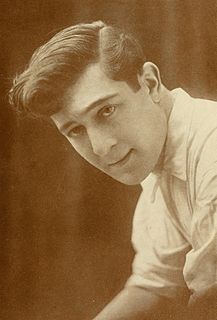
Hobart Henley was an American silent film actor, director, screenwriter and producer. He was involved in over 60 films either as an actor or director or both in his twenty-year career, between 1914 and 1934 when he retired from filmmaking.

Harry C. Myers was an American film actor and director, sometimes credited as Henry Myers. He performed in many short comedy films with his wife Rosemary Theby. Myers appeared in 330 films between 1908 and 1938, and directed more than 50 films between 1913 and 1917.
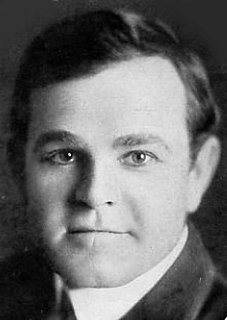
George Guy Oliver was an American actor. He appeared in at least 189 silent film era motion pictures and 32 talkies in character roles between 1911 and 1931. His obituary gives him credit for at least 600. He directed three films in 1915.
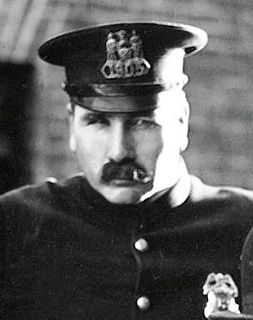
Tom Wilson was an American film actor.

Bertram Grassby was an English actor. He appeared in more than 90 silent era films between 1914 and 1927. Grassby was married to American actress Gerard Alexander. He was born in Lincolnshire, England and died in Scottsdale, Arizona.

Frederick Vroom was a Canadian actor of the silent film era. Vroom appeared in more than 70 films between 1912 and 1939, mostly in supporting roles and bit parts. He played featured roles in Buster Keaton's films The Navigator (1924) and The General (1926). He was born in Clementsport, Nova Scotia, Canada and died in Hollywood, California from a heart attack.

Pathé Exchange, commonly known as Pathé, was an American film production and distribution company, largely of Hollywood's silent era. Known for its groundbreaking newsreel and wide array of shorts, it grew out of the American division of the major French studio Pathé Frères, which began distributing films in the United States in 1904. Ten years later, it produced the enormously succeesful The Perils of Pauline, a twenty-episode serial that came to define the genre. The American operation was incorporated as Pathé Exchange toward the end of 1914 and spun off as an independent entity in 1921; the Merrill Lynch investment firm acquired a controlling stake. The following year, it released Robert J. Flaherty's influential documentary Nanook of the North. For much of the 1920s, Pathé distributed the shorts of comedy pioneers Hal Roach and Mack Sennett and innovative animator Paul Terry. Beginning in 1927, the studio changed hands several times in quick succession: it came under the control of the Keith-Albee-Orpheum theater chain, then financier and Hollywood maestro Joseph P. Kennedy, and finally, in January 1931, RKO Pictures. Its semiautonomous production of features as RKO Pathé ended by late 1932, though RKO released Pathé-branded newsreels and shorts for many years afterward. The Pathé News operation was purchased in 1947 from RKO by Warner Bros., which shut it down in 1956. A few of Pathé's minor assets, including its film lab facilities, were not included in the RKO acquisition and ultimately reorganized as Pathé Industries, which reentered the movie production business for a half-decade in the 1940s with its purchase of Producers Releasing Corporation.

Joseph Johnson Dowling was an American stage and silent film actor.

Selznick Pictures was an American film production company active between 1916 and 1923 during the silent era.
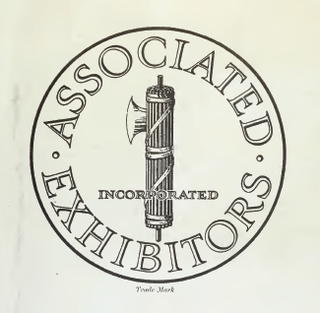
Associated Exhibitors was an American film distribution company active during the silent era. The company did not produce its own pictures but released productions by independent producers, handling a mixture of low-budget and more prestigious films during the 1920s. Established in 1920, it had a close association with Pathe Exchange, another medium-sized American company.
Arrow Film Corporation was an American film production and distribution company during the silent era from 1915 to 1926. An independent company it operated alongside the established studios. Originally formed to supply films for Pathé Exchange, the company quickly separated and concentrated on a mixture of medium and low-budget productions. The company was sometimes referred to as Arrow Pictures.
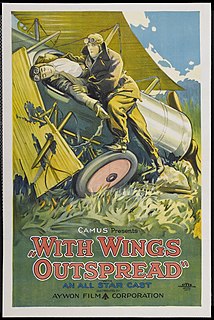
Aywon Film Corporation was an American film distribution company of the silent era. Founded in New York by Nathan Hirsh it was active between 1919 and 1929. The company mainly released western and action films but also handled several foreign imports such as The Blue Danube, The Hands of Orlac, The Prude's Fall and The Pleasure Garden.
Chester A. Lyons (1885–1936) was an American cinematographer. Active in the American film industry from 1917 until his death he worked on over eighty films during his career, the majority of them in the silent era. He began his career with Triangle Films and was later employed by Paramount, Fox, First National and MGM.